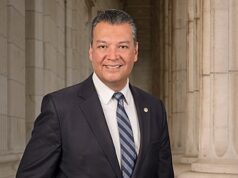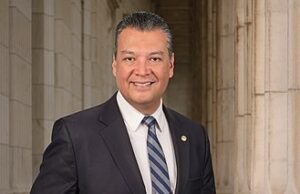WASHINGTON, D.C. – (RealEstateRama) — The Office of Management and Budget released a report entitled, “Delivering Government Solutions in the 21st Century: Reform Plan and Reorganization Recommendations.” This 132-page document details an unprecedented and broad reorganization across many federal agencies. The proposal also addresses the future of mortgage finance, specifically how two Government Sponsored Enterprises (GSEs), Fannie Mae and Freddie Mac, will function.
The report notes that these entities have remained under government control since 2008. The proposal would end the government conservatorship, privatize the GSEs, and reduce their role in the housing market. The GSEs would no longer be responsible for fulfilling public interest mandates, as required by their current government charters. Instead, the U.S. Department of Housing and Urban Development would be the sole agency to address affordable housing for low- to moderate-income borrowers.
In response, Nikitra Bailey, Executive Vice President at the Center for Responsible Lending issued the following statement:
A decade ago, excessive Wall Street greed and predatory lending led to a tsunami of unnecessary foreclosures that took away the homes of millions of hardworking families. That experience should have served as a warning to this administration about the harmful costs of reckless deregulation letting greed go unchecked on all Americans.
Unfortunately, the White House has not learned from history. This proposal is a bull in a china shop that threatens to harm our recovering economy and exacerbate our affordable housing crisis. Congress should reject this misguided plan.
Additional Background
Fannie Mae and Freddie Mac, chartered by Congress as private entities with specific governmental duties including a broad-based duty-to-serve, were responsible for 70 percent of 2017’s mortgage originations. The GSEs created broad mortgage availability by making loans more affordable through the creation of the 30-year fixed rate mortgage and freed up billions of dollars in capital for lenders to make more and new mortgage loans with their purchase of loan originations.
Earlier mortgage research by the Center for Responsible Lending determined that many of these foreclosures were unnecessary, and that many who were targeted for high-cost, subprime, unsustainable loans could have qualified for less costly conventional loans but were steered into more expensive mortgages due to mortgage broker kickbacks.
Together the Dodd Frank Act, Consumer Financial Protection Bureau’s (CFPB) sensible mortgage protections, and the Housing Economic Recovery Act (HERA) reformed the mortgage market with needed protections. Today, the GSEs have a strong regulator, the Federal Housing Finance Agency (FHFA), that is charged to impose strong capital standards and ensure that GSE activities are limited to only those necessary to further their public purpose.
As a result, taxpayer risk has already been reduced. No longer are the GSEs engaging in political or lobbying activities, which in the past had been used to reduce and undermine their oversight duties. In sum, the GSEs are fundamentally changed for the better, and the pre-2008 GSEs are a relic of the past.
All of these successful reforms have led to banks experiencing record profits. Today the Office of the Comptroller of the Currency released a report showing that banks and federal savings associations reported revenues of $8.2 billion in the first quarter of 2018, a 62.8 percent increase of $3.2 billion than the previous quarterly report.
At the same time, there are many consumers who have yet to know a financial recovery. Homeownership rates among young adults are lower today than in 1988. In many instances, long-term student debt burdens of $1.5 trillion affects 44 million consumers. If not for these heavy debts, more and younger consumers would be better financially situated to become homeowners.
Today’s Black homeownership rate is lower than it was in 1968 when the Fair Housing Act was enacted. Market moves toward excessive risk-based pricing has also stopped more than 6 million additional loans from being made including 250,000 of those loans annually to people of color according to the Urban Institute and Core Logic.
According to the newly-released State of the Nation’s Housing 2018 by Harvard’s Joint Center for Housing Studies, 11 million households now pay more than half of their income for housing. These Americans have wages and incomes that have not kept pace with the broader economic recovery.
For more information, or to arrange an interview with a CRL spokesperson on this issue, please contact Charlene Crowell at ">.
Source: Center for Responsible Lending














